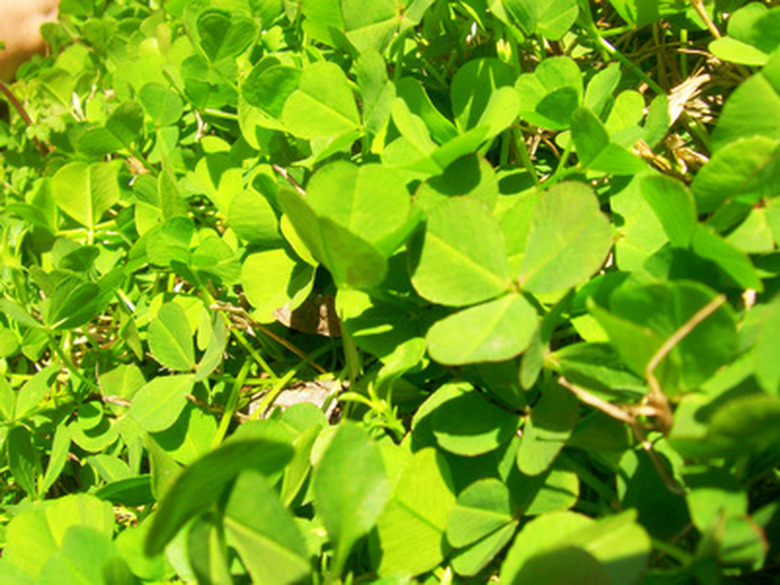Shamrock Plant Diseases
Shamrock plants are a fun, pretty perennial that can be houseplants or bedding plants. Their foliage comes in cream and silver as well as classic green. These plants are fairly low-maintenance, but they do have a few problem-diseases that, untreated and uncontrolled, can take out an entire shamrock bed. The best way to keep your plants safe from shamrock plant disease is to monitor them closely for the beginning signs of a problem.
Chlorotic Ring Spot
Chlorotic ring spot is first indicated by yellow rings on the leaves of your shamrock plant. These rings usually are open, with a green, healthy area remaining in the center. However, unchecked, this ring spot can spread and eventually defoliate your plant. Ring spot disease is transmitted by aphids, so it is very important to keep your shamrock plant clear of these pests. There is no chemical control for the infection once it has taken hold, but you may be able to thwart it by using sterile pruning and disposal techniques to remove affected leaves and shoots. Also, pretreating to avoid an initial aphid problem will usually keep your shamrock plants clear of this ring spot disease. If the infection persists, however, remove the plant from its bed to avoid affecting the other shamrock plants around it.
- Shamrock plants are a fun, pretty perennial that can be houseplants or bedding plants.
- Also, pretreating to avoid an initial aphid problem will usually keep your shamrock plants clear of this ring spot disease.
Fungal Rust
This usually occurs in potted shamrock houseplants. You can spot the signs of fungal rust infections on the undersides of your shamrock's leaves, which will be orange or brown. You will need to remove the plant from the pot and wash the pot thoroughly, then replace the potting soil. Wash the plant itself first with neem oil, which is a natural, antifungal oil, then follow up with a chamomile tea rinse to fortify the leaves against the infection. By now, all the rust on the bottom of the leaves should be gone. If any leaves have been damaged beyond repair, remove them and dispose of them in a garbage bag to prevent reinfection. Monitor your plant for recurrence of the infection and remove affected foliate immediately.
- This usually occurs in potted shamrock houseplants.
- You can spot the signs of fungal rust infections on the undersides of your shamrock's leaves, which will be orange or brown.
Spider Mites
Spider mite infestations are fairly easy to deal with in houseplant shamrocks, which is where they almost always occur. The mites will look like small, white spots on the leaves, and they cause the leaves to wilt. They make small webs underneath leaves and near the sites where the stems join to the plant. Spraying the plants with water containing a drop of dish soap and a clove of steeped garlic is a good natural remedy for spider mites. You can also physically wash the mites off the leaves and stems or treat the entire plant with a targeted pesticide to kill the mites completely.
